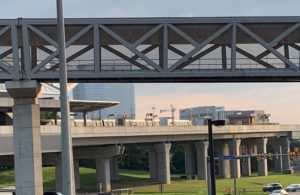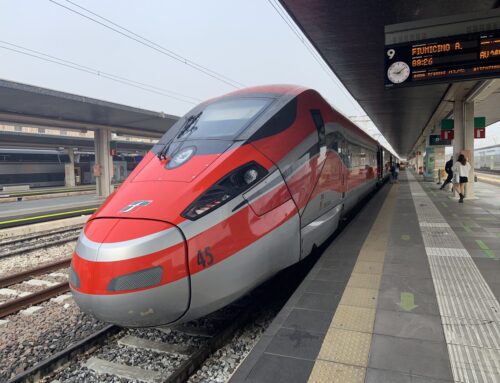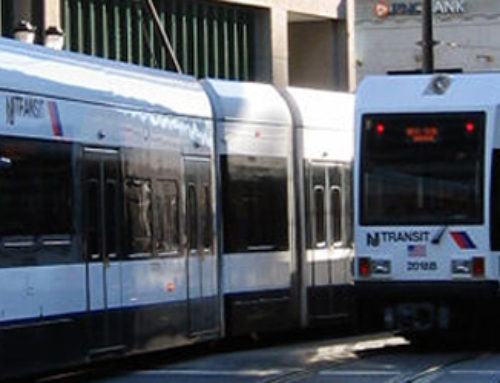 In recent years, there has been increasing discussion about the use of “progressive” design-build and P3 contracting as an improved method for certain types of infrastructure project development. In particular, groups such as the Water Design-Build Council in Denver have done an excellent job developing guidance, as well as procurement documents and contract forms. Even further back in the 1980’s, the AIA put out a two stepped contracting form for design-build which could be classified as progressive design-build. This blog is a summary of a progressive contracting approach to design-build and P3s for large transit projects.
In recent years, there has been increasing discussion about the use of “progressive” design-build and P3 contracting as an improved method for certain types of infrastructure project development. In particular, groups such as the Water Design-Build Council in Denver have done an excellent job developing guidance, as well as procurement documents and contract forms. Even further back in the 1980’s, the AIA put out a two stepped contracting form for design-build which could be classified as progressive design-build. This blog is a summary of a progressive contracting approach to design-build and P3s for large transit projects.
Progressive P3‘s in Rail Transit. It is hard to pinpoint when a progressive approach to project delivery first developed for major rail infrastructure projects in the U.S.. To my knowledge, this concept originated in the 1990’s and early 2000’s with project successes like New Jersey Transit’s Hudson Bergen Light Rail Transit Project (SOS Extension) and the Dulles Metrorail Project (Phase 1 to Wiehle Ave.). Later Houston Metro continued this approach with use of an innovative P3 “Facility Provider Agreement” for their system expansion. I am grateful to have Ben Redd and Frank Russo as Senior Advisors to P3 Collaborative LLC, both of whom were original innovators of this progressive method of contracting on these transit projects.
When to Enter Into the “Master” Agreement. During or immediately following the environmental permitting and approval process, the public sector should consider a best value, qualifications based procurement to select the P3 partner. Qualifications should include the proposed team’s past performance, key personnel, capabilities, and financial strength to manage and deliver the entire life cycle of the project being considered. The resulting agreement could be called a Facility Provider Agreement, a Project Agreement, a Master Development Agreement or a Comprehensive Agreement (CA). This CA would be an overarching agreement which establishes the “partnership” and allows the Project to be phased, with 2 or more staged agreements to include development, design-build, financing, operations and maintenance.
Risk Mitigation Early On. The phased agreements will generally follow each other in sequence, as approvals, risks, financing, local factors, opposition and design become better defined. The CA would include off ramps that provide the public agency the ability to terminate the contract at different stages, and pursue other means of delivering the Project. A primary advantage of this approach is the Development Phase. Here the private partner collaborates with the public sector in advancing the Project with development support, value planning, preliminary engineering, preparation of bid packages (if required), acquire right of way, plan utilities and generally mitigate risks prior to final pricing. The Project also could be designed-to-budget with a follow-on commitment to construct it for that budget.
Building Consensus for Financial Plans. In addition, the private partner can assist with the conceptual plan of finance, stakeholders consensus building and interagency agreements. During this Development Phase a primary initiative should be to develop a Project finance plan supported by the primary beneficiaries. This would include if required, the formation of special district tax financing or other value capture methods which provide all or a major portion of the local share of funding. The private partner can help promote those discussions and agreement through stakeholder approval of Transportation Improvement Districts which can provide “value capture” funding from retail, commercial, transportation, cultural, event venues, and multifamily property owners. The Development Phase can also include cost sharing responsibility between the public and private sector with appropriate performance incentives for critical deliverables and milestones deliverables.
Negotiating a Design-Build Contract. As the Development Phase is completing, the parties will begin work on a Design-Build Contract. The terms and conditions and pricing can be on an “open book”, negotiated basis. The failure to reach a satisfactory agreement on design-build terms, or for any other stages of agreement, would provide an off ramp for either party, so the parties are motivated to reach a fair and equitable deal. Through a negotiated process with development complete, the final DB agreement can have a fixed price, guaranteed maximum price (with allowances), or other methods to provide price and schedule certainty and a realistic risk allocation.
Adding in Finance and Operations. The financing if included can involve bridge or gap financing for the Design-Build Contract. Financing can also be coupled with a longer term Operations and Maintenance (O&M) contract, the final stage of agreement. Coupling DB with O&M provides the ability to get full life cycle cost benefits. A DBOM with or without financing, provides the benefits of an extended warranty for the public sector, as well as budgetary certain for the O&M costs. This helps avoid the deferred maintenance problem at the core of a good deal of our infrastructure problems today. This progressive approach makes financing an option which can be evaluated as the project develops and makes possible off ramps much simpler. Even without a project financing, the DBOM contractor can wrap and secure performance guaranties and risks.
As we know, there is no “one size fits all” approach for the selection of the best project delivery approach. All projects and transit agencies have their own individual characteristics and unique requirements. For mega transit projects, however, progressive P3 and design-build contracting approaches have many benefits and tremendous flexibility allowing for innovation. Thus progressive contracting warrants serious consideration early in the planning stages.





Leave A Comment